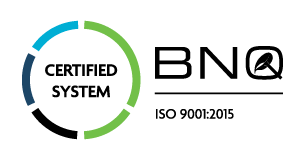Glazing technology has come a long way. Before large glass panels could be made, small panes had to be held together with bars to make windows. It took centuries to develop the processes necessary to produce glass without imperfections, and decades more to create glass that could bear significant weight.
Today, the world is full of skyscrapers and office buildings with facades made almost entirely of glass, and there are glass bridges that are safe to walk on. This is only possible because of technological advances such as structural glazing.
But what is structural glazing, exactly? In this article, the experts at Adfast explain the concept of structural glazing and explore its many uses and benefits.
What is structural glazing?
Structural glazing is a building material made up of panels of reinforced, load-bearing glass that are bonded together and held in place by silicone adhesive or other unobtrusive methods. Since the glass used is thicker and stronger, it does not need a frame to support it, resulting in a streamlined aesthetic and an unobstructed view of the world beyond the glass.
How structural glazing is put together
In most cases, the glass panels in a structural glazing system are held together and bonded to the framework of a building or other structure using strong, high-performance silicone sealant that is designed specifically for the purpose. The adhesive needs to be flexible enough to withstand the system’s components moving and shifting due to temperature fluctuations, moisture, shrinkage, wind and vibrations.
Uses for structural glazing
Structural glazing is most often used to construct curtain walls for skyscrapers. Glass facades have now become ubiquitous in city centres around the world. Structural glazing systems give these towering edifices a sleek, seamless look while still providing adequate insulation and protection from the elements.
This versatile material can be used to create everything from frameless glass walls and roofs to completely transparent elevators. Structural glazing also has residential applications—homeowners are using it to build skylights and glass extensions that make the most of the natural light.
More recently, transparent bridges and walkways have been built using structural glazing. Structures such as the Zhangjiajie glass bridge in Hunan, China and Canada’s own Columbia Icefield Skywalk provide visitors with an unprecedented view of dizzying drops and stunning landscapes.
The benefits of structural glazing
Natural light
Structural glazing is a great way to increase natural light in a building. Daylight regulates our circadian rhythm, which plays a vital role in almost all of the body’s systems, particularly sleep, metabolism, mental health and immune response. Too much time spent in dim, artificially-lit environments can negatively affect these systems.
The ability to create massive, practically uninterrupted glass facades with structural glazing provides building occupants with a better connection to the outside world, improving well-being and productivity.
Insulation
Insulation is one of the great advantages of structural glazing. This may seem counterintuitive, because glass used to make spaces overheat during the day and cool off too much at night, but due to advances in technology, modern glass is actually very well insulated. Thermal glass technology uses “solar gain” to absorb the warmth of the sun and keep spaces at a comfortable ambient temperature regardless of the weather outside and the time of day.
Furthermore, since adhesive is used to connect the glass panels rather than metal framing, structural glazing systems have little to no exposed metal on the exterior. This results in less thermal bridging, meaning that less energy will be required to heat and cool the space.
Architectural freedom
Structural glazing provides unprecedented versatility. Since the glass can bear weight and doesn’t require a frame, building design doesn’t need to be limited by available framing sizes or the weight of the glass. Structural glazing provides a solution for architects who want the freedom to create massive, unique glass installations.
Adfast: secure bonding for your structural glazing systems
Structural glazing is an innovative building material that takes advantage of all modern technology has to offer. The specially reinforced glass used is strong enough to walk on and bear its own weight, and the flexible silicone adhesive provides a smooth, seamless aesthetic and eliminates the need for framing.
Adfast has several high-quality products that are ideal for use in structural glazing systems. This includes the Adseal structural 4940 series, a structural neutral cure silicone adhesive sealant that offers excellent adhesion to anodized aluminum and glass and great UV resistance. The series is also non-corrosive, low in VOCs and meets the ASTM C1184 standard.
Adfast is a company that provides adhesives, sealants, membranes and insulation for the construction industry and for residential use. In addition to supplying top quality caulking and insulation products, we partner with industry stakeholders and offer the expertise of our technical advisors to contribute to the success of their projects. Contact us today to take advantage of our innovative solutions!



















